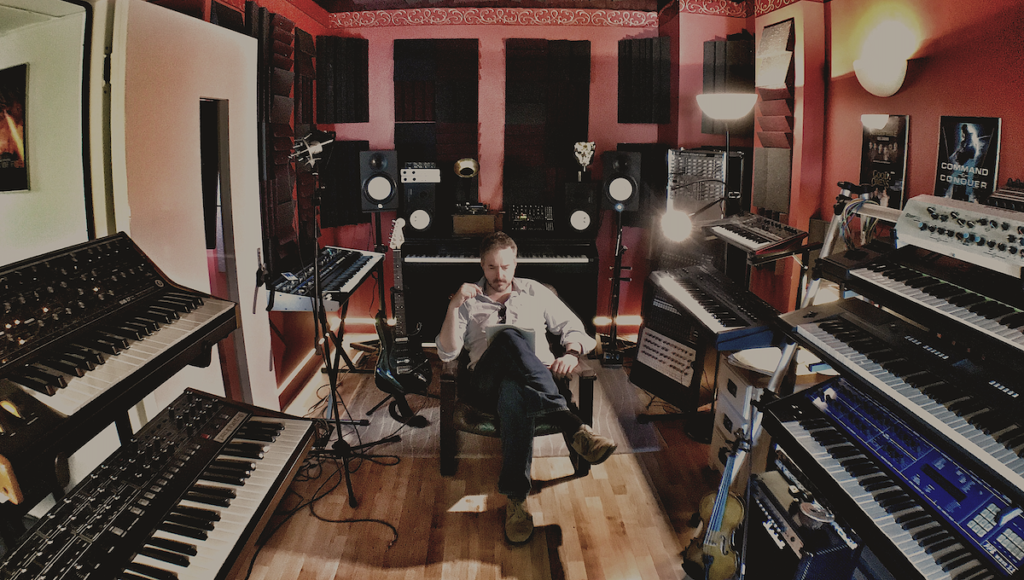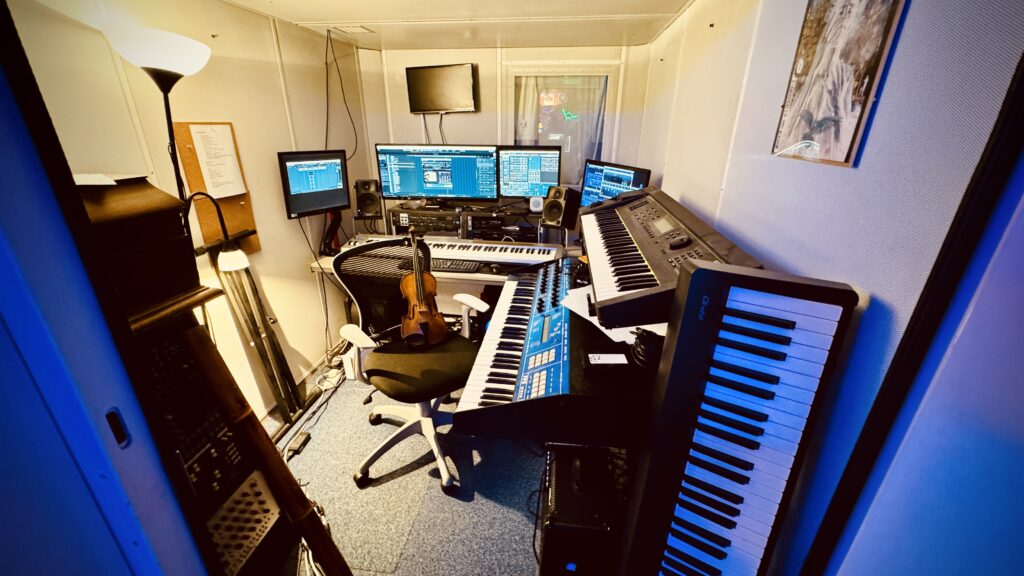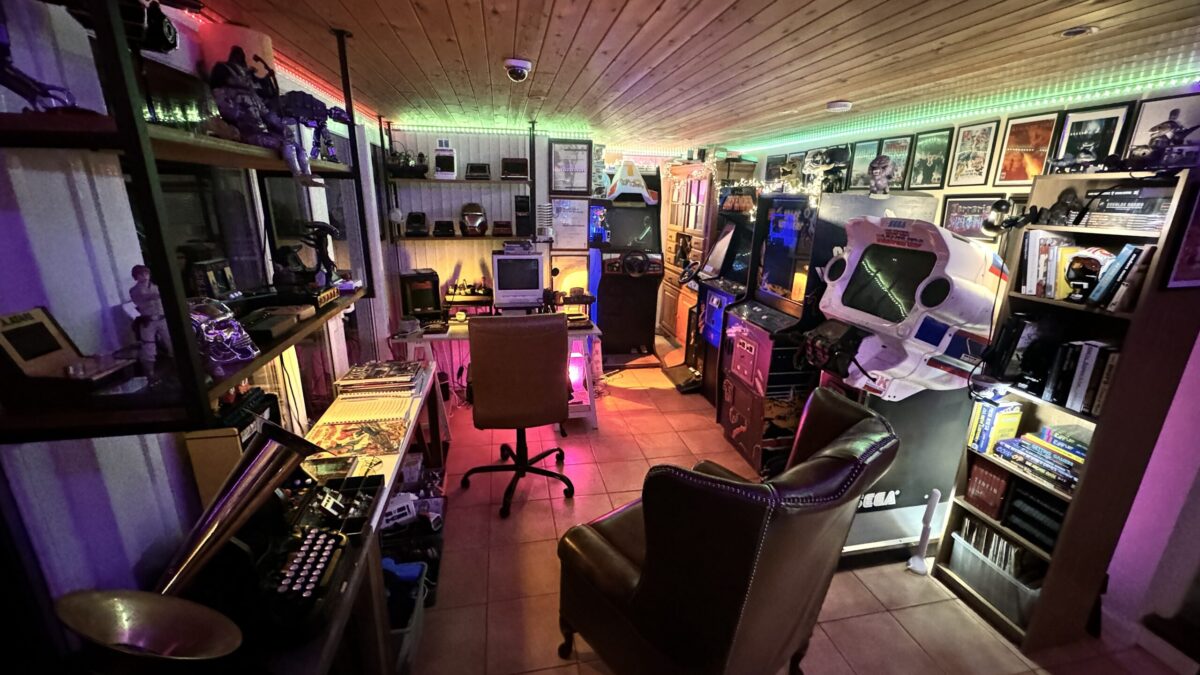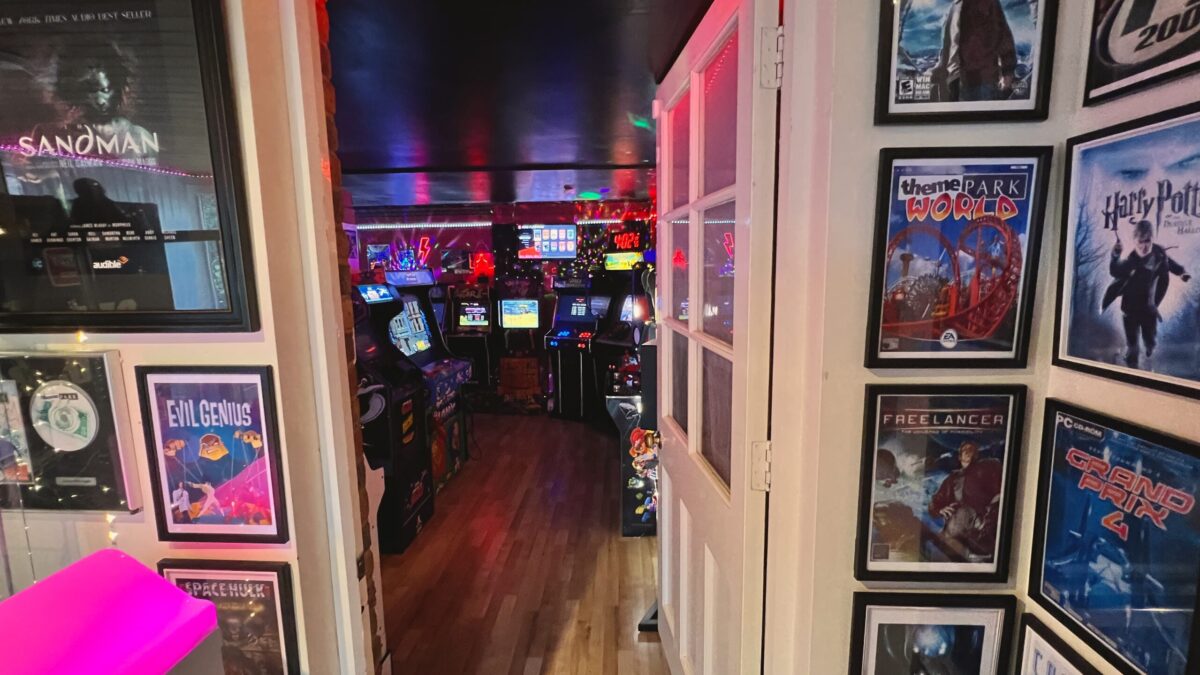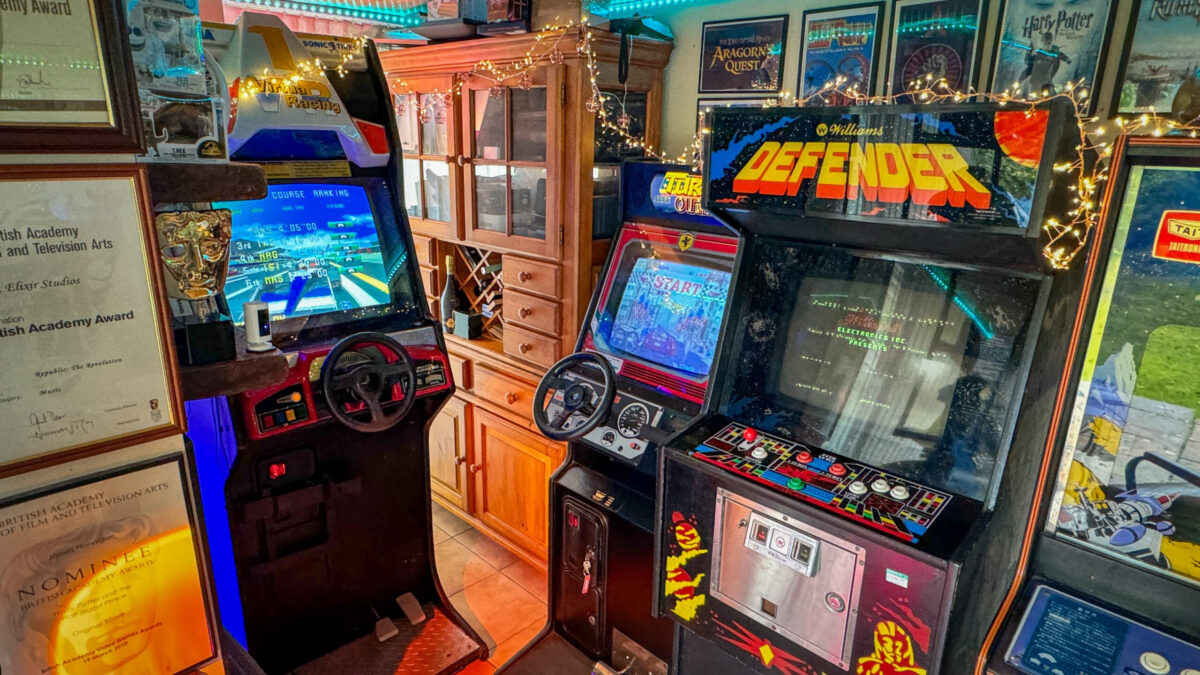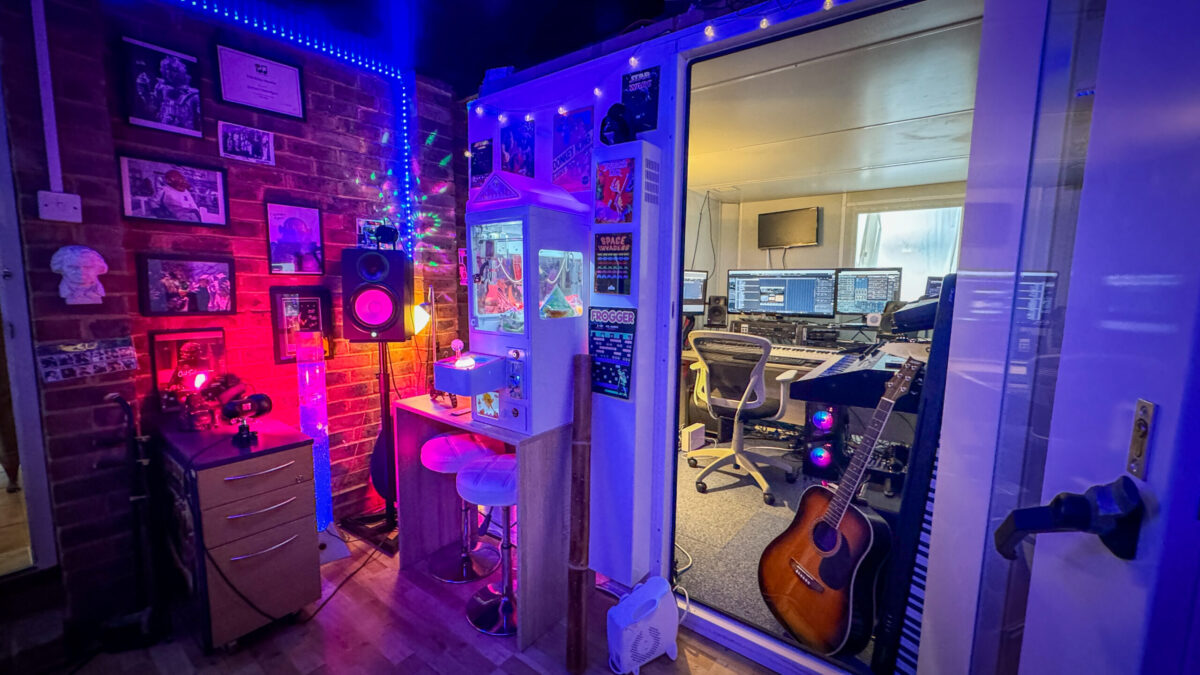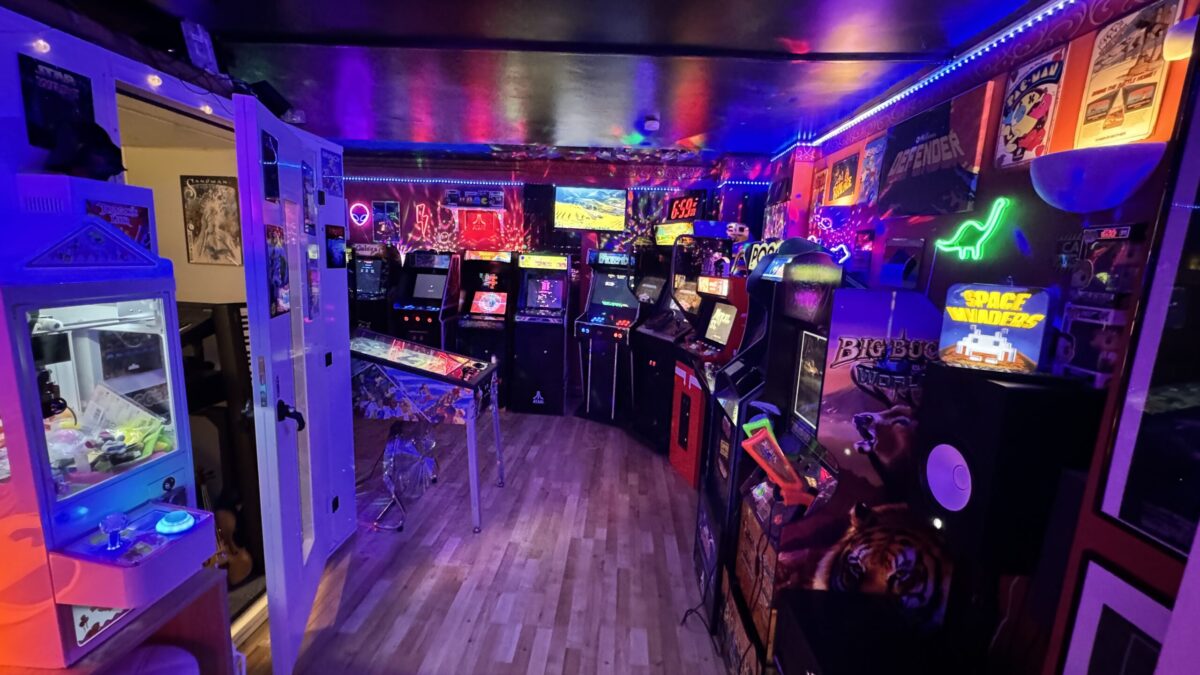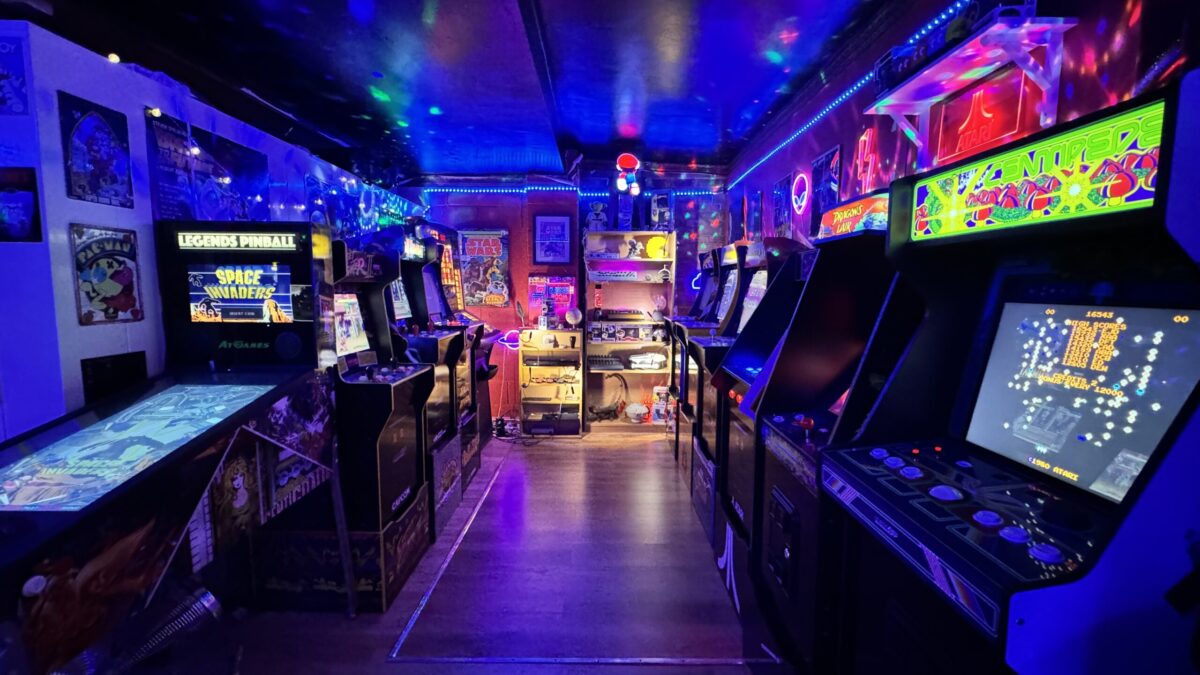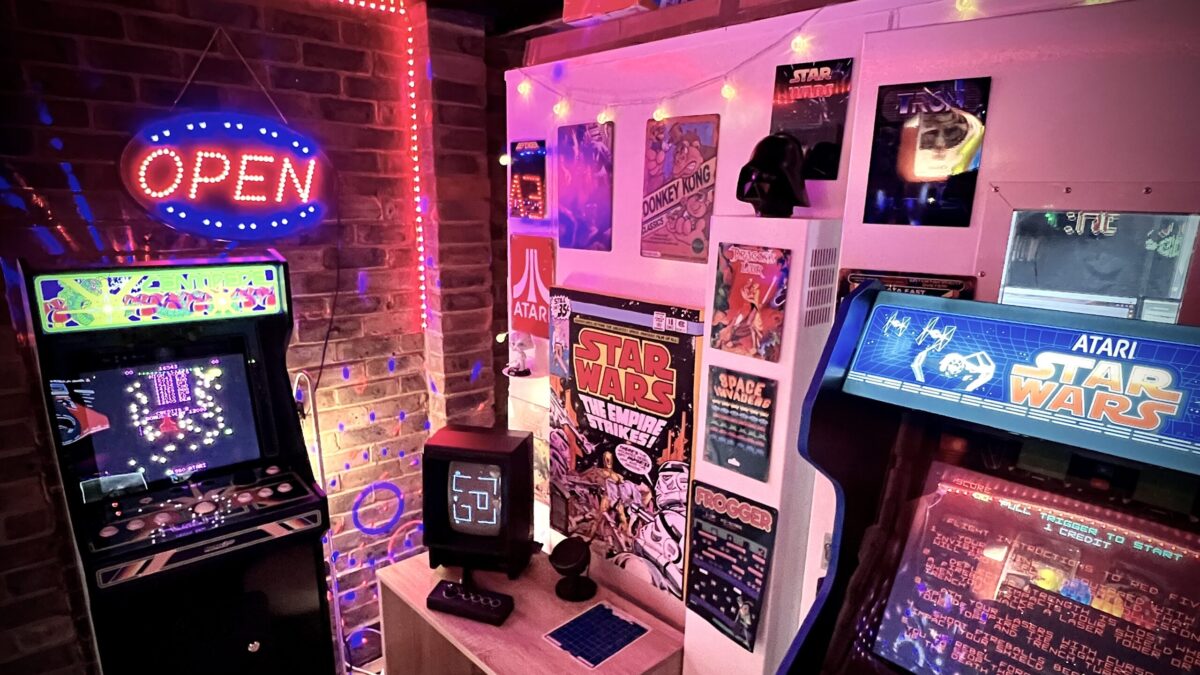High Scores: A Composer’s Passion for Arcade Gaming – Part 1: Studio Arcade
Reflections on the 1980s arcade scene, home arcades and retro tech – by way of a tour of my studio arcade.
What started out as a half-hearted attempt to give the rooms around my studio “a bit of an arcade theme” spiralled further out of control this year, leaving me with what I can only describe as an “arcade with a bit of a music studio theme”. In a vain attempt to keep things loosely “work related” I’ve put posters up of some from my past projects, but this isn’t fooling anyone – least of all me.
I lay the blame for my cavalier attitude towards arcade machine acquisition squarely at the feet of my inner twelve-year-old, a socially awkward and troubled boy who uses arcade machines to self-medicate, trapped somewhere in 1983…
And if this points towards some sort of midlife crisis – which it surely does – then I feel I can at least console myself with the idea that it’s a fairly cool manifestation of one. It also affords me an excuse to write about what I like about arcades and the retro scene in general, having failed to put pen to paper (well, finger to keyboard) for a while now. But be warned: this is going to get geeky. Extraordinarily geeky.
For some, it’s sports cars and marathon running. For me, it just happens to be garish arcades, Defender, Space Invaders and the like. (Along with analogue synths, ancient computers, gramophones, phonographs, comics, old cameras and stuff such as that – but those are all long term afflictions).
Inner child James – unable to comprehend adult James’s complicated life – declared war on his adult self earlier this year, with arcade machines becoming the chosen battleground. Across the decades, young James had screamed at outer adult James to play Atari Star Wars again in particular – believing, naively, that this may transport him back to Bournemouth’s magnificent Pier Amusements during the 1980s.
Baby-faced James wasn’t wrong: Playing Star Wars again – thanks to the emergence of a decent replica from Arcade 1UP – proved to be a pretty thrilling experience. The familiar yolk, the assault on the Death Star, the glowing vector graphics (albeit rendered on an LCD rather than a CRT monitor), the emulated POKEY chip music and a grainy sampled Sir Alec Guinness are all pretty much as big James remembers them.
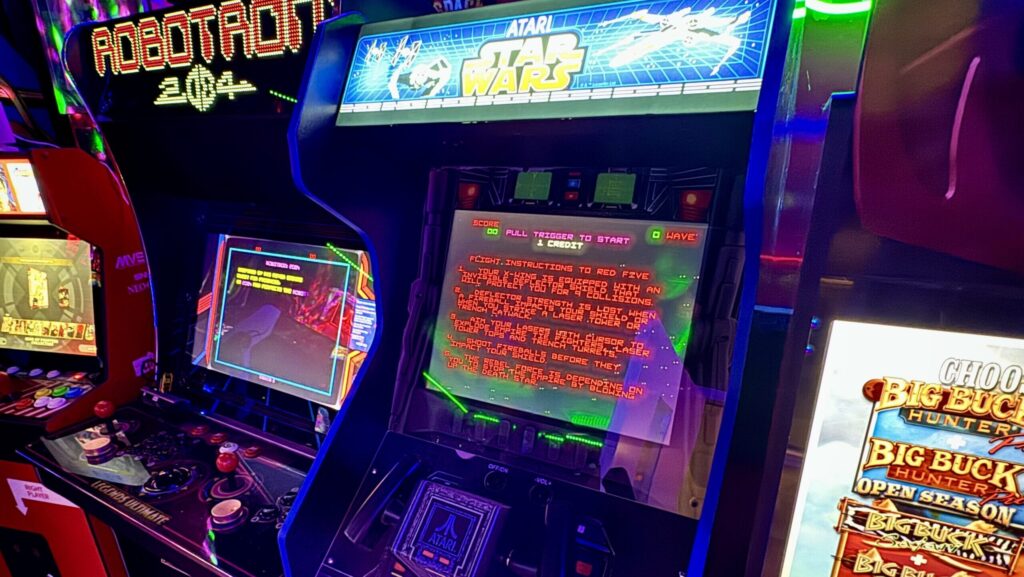
I’m tempted to crack a joke here, describing this kind of midlife-crisis as something of a quarter-life crisis, but for a British person accustomed to pumping ten-pence pieces into coin slots instead, that would be a little pretentious. (Too late, clearly…)
There’s no doubting that much arcade paraphernalia – and the culture surrounding it – did, of course, originate in the US (and Japan), even if the British have long had their own unique way of celebrating it – particularly, as I recall it, in and around seaside resorts. (I read a wonderful book by Alan Meades on this subject recently, called Arcade Britannia: A Social History of the British Amusement Arcade, which I can wholeheartedly recommend).
